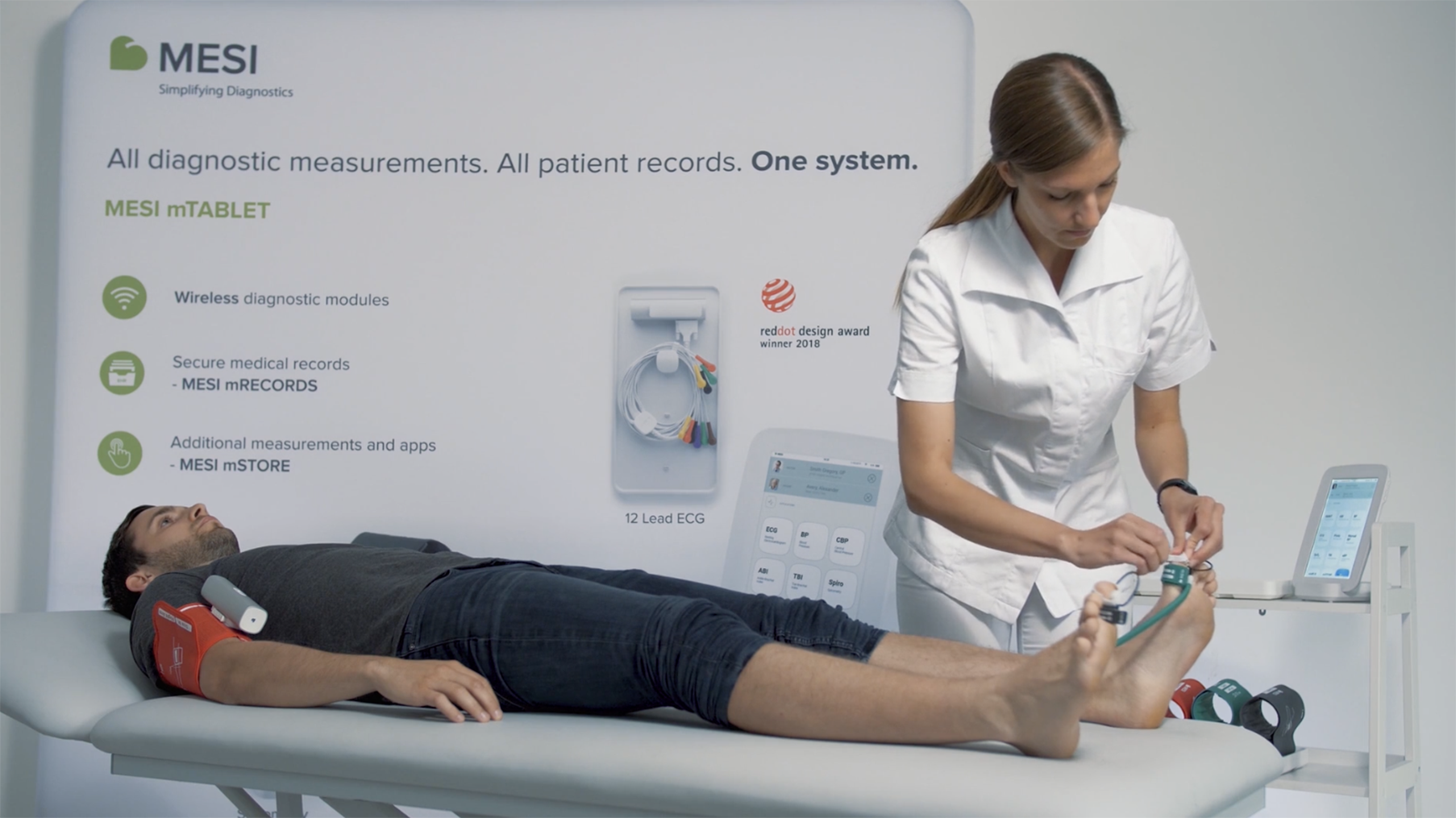
06 May Advancing Wound Care: How Peripheral Devices Enhance Diagnosis, Treatment, and Patient Outcomes
Wound care presents countless challenges for medical professionals. From delayed healing and undetected infections to circulation issues and misdiagnoses, each wound tells a unique story requiring tailored solutions. The introduction of peripheral devices into the field has transformed how clinicians diagnose, treat, and care for wounds. By leveraging cutting-edge technologies, healthcare providers can improve precision, efficiency, and patient outcomes across the board.
This blog explores the role of advanced devices such as Mesi® ABI/TBI tools, MolecuLight®, ultrasound, and the UltraMIST® System in overcoming common hurdles in wound management. These innovations represent a step forward in the data-driven, patient-focused approach we need to enhance recovery rates and streamline care.
Understanding the Challenges in Wound Care
Wound care is far from just skin deep. It is a multifaceted process influenced by factors like poor vascular health, chronic conditions like diabetes, and biofilm-related infections. Without accurate diagnostic tools and effective treatment options, wounds can become chronic, leading to patient discomfort, limited mobility, and even more serious conditions like sepsis or amputation.
For physicians and surgeons, time is critical. The delay between identifying a problem and taking action can mean the difference between a patient’s recovery and complications. Peripheral devices rise to this challenge, offering immediate diagnostic insights and non-invasive therapeutic options.
Transforming Diagnostics with Peripheral Devices
Peripheral devices provide clinicians with tools to more effectively target, analyze, and treat pressing wound issues. Here’s how these devices are reshaping the landscape of care.
Mesi ABI/TBI Devices: Assessing Vascular Health with Speed and Accuracy
One of the most significant barriers to wound healing is poor circulation. Peripheral arterial disease (PAD), venous insufficiency, and diabetes frequently disrupt blood flow, slowing the healing process. Mesi ABI/TBI devices are redefining the way vascular health is assessed.
These devices quickly measure the Ankle-Brachial Index (ABI) and Toe-Brachial Index (TBI), offering automated, precise results in just minutes. Rather than relying on traditional, error-prone manual methods, Mesi’s tools enhance confidence in diagnosis and decisions. For example, early identification of vascular insufficiency can lead to timely referrals for specialized vascular interventions.
The impact is profound:
- Early detection of circulation issues ensures tailored treatment plans.
- Physicians gain insights into whether compression therapy is appropriate for venous ulcers.
- Wound management becomes more effective by addressing underlying blood flow challenges.
MolecuLight: Visualizing Bacteria for Real-Time Intervention
Identifying infection is critical in any wound care strategy, yet traditional lab cultures often take days to deliver results. Assuming antibiotics are sometimes prescribed without sufficient evidence, contributing to resistance issues and unnecessary delays in healing.
MolecuLight eliminates this waiting game. Fluorescence technology allows clinicians to detect bacteria and biofilm in real time. No contrast agents or direct contact is required, making it a highly patient-friendly option.
Key benefits of MolecuLight include:
- Faster cleaning and debridement. By visualizing bacteria, clinicians can target their approach with greater accuracy.
- Streamlined decision-making. Immediate insights lead to quicker antimicrobial therapy initiation when needed.
- Reduced infection-related complications. Earlier interventions help minimize the risks of infection spreading, accelerating healing timelines.
Ultrasound in Wound Care: Providing Unmatched Imaging Insights
Ultrasound has become an invaluable tool in wound management, offering real-time imaging capabilities to determine wound depth, surrounding tissue status, and perfusion. For complex wounds requiring in-depth evaluation, ultrasound bridges the gap between surface assessments and internal diagnostics.
How does this technology enhance care?
- Depth and tissue analysis: Ultrasound pinpoints fluid collections or other underlying issues such as abscesses, ensuring correct steps for drainage or debridement.
- Guiding intervention: Physicians rely on ultrasound to steer procedures with precision.
- Progress tracking: It provides dynamic feedback over time, reducing misdiagnoses and helping adjust treatment plans effectively.
This data-driven approach enhances outcomes by eliminating guesswork and ensuring that every step considers the wound’s underlying conditions.
UltraMIST System: Painless, Non-Contact Healing
Chronic wounds, particularly diabetic ulcers or pressure sores, often struggle to heal due to inflammation, biofilm build-up, and poor oxygenation. UltraMIST introduces a revolutionary therapy powered by low-frequency ultrasound delivered through a gentle mist.
Unlike traditional approaches, UltraMIST therapy is both painless and non-contact, making it ideal for sensitive or hard-to-reach areas.
What makes UltraMIST so impactful?
- Biofilm and bacterial reduction: Ultrasound mist therapy disrupts problematic biofilm that often hinders healing progress.
- Tissue regeneration: By stimulating cellular activity, it jumpstarts the body’s natural healing processes.
- Faster closure for chronic wounds: Many patients experience noticeable improvement in healing timeframes, improving their overall quality of life.
The innovation behind UltraMIST enables physicians to complement other advanced wound care methods, creating a seamless and effective care pathway.
A Modern Path to Better Outcomes in Healing
These technologies represent more than technical advancements; they highlight the industry’s focus on elevating patient care standards. Tools such as Mesi ABI/TBI devices, MolecuLight, ultrasound, and the UltraMIST System allow physicians to base their treatment strategies on concrete, real-time data. This transition towards precision-based wound management helps patients recover faster while reducing the potential for complications.
At FritzFinn, we understand the importance of integrating these advanced solutions into your practice. By combining the latest tools with a consultative approach, physicians and surgeons can provide truly personalized care that transforms lives. The future of wound care lies in collaboration between innovation and compassion, and we’re here to support you at every step.
Looking Ahead
From diagnostics to therapy, peripheral devices empower your practice with efficiency, accuracy, and improved outcomes. While the challenges of wound care are significant, these technologies provide a way forward, offering hope to patients and confidence to clinicians.
Partner with FritzFinn and discover how we can elevate your wound care solutions. Together, we can build a future where healing is faster, smarter, and more compassionate. Learn more about our products and solutions today.
Sources:
- “Use of Toe-Brachial Index (TBI) in Wound Care,” Mesi Medical
- “Podiatric Wound Assessment in Less Time,” Mesi Medical
- “Transform Wound Management with Multimodal Imaging,” MolecuLight
- “Largest Published Real-World Wound Imaging Study Reports MolecuLight® led to Wound Treatment Plan Changes in up to 53% Cases,” MolecuLight
MolecuLight i:X® Fluorescence Imaging Device, WoundSource Product Guide


Sorry, the comment form is closed at this time.